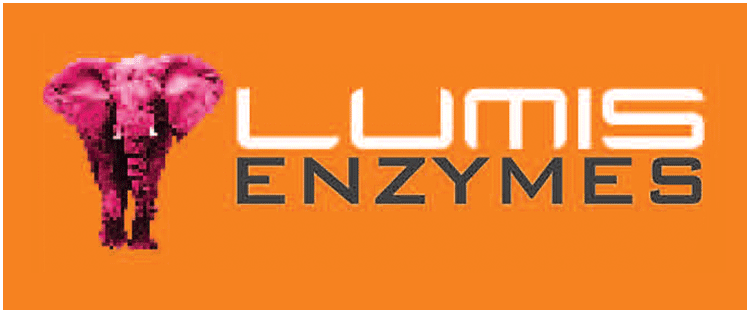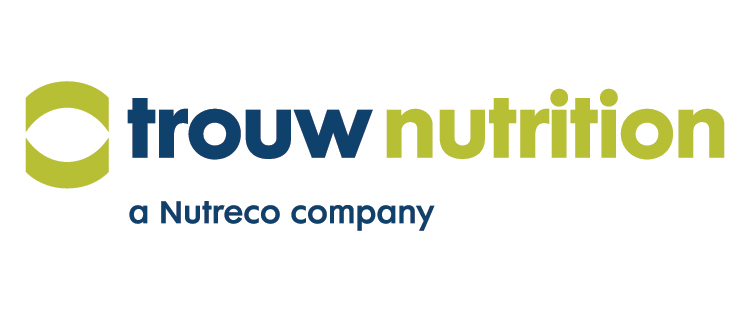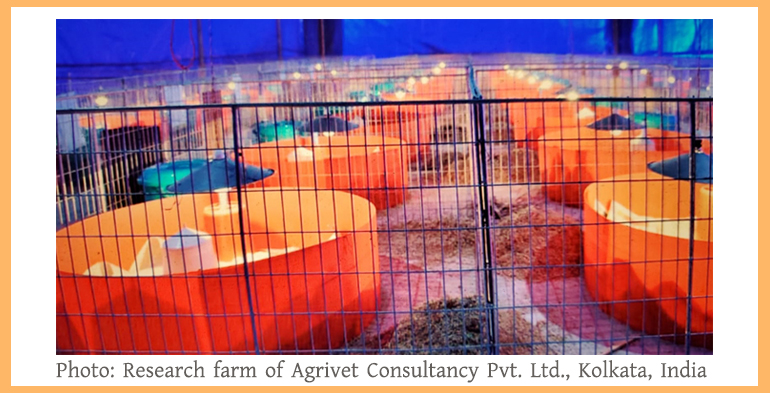
(From-Mohiuddin Amirul Kabir Chowdhury, Amrita Kumar Dhara, Shivaji Dey, Anirvid Sarkar, Sudipto Haldar, Glenmer Bathan Tactacan, Protease Complex Reduces Potentially Pathogenic Microbial Populations in the Ileum While Optimizing Performance of Broiler Chickens, Animal and Veterinary Sciences. Vol. 9, No. 1, 2021, pp. 16-23. doi: 10.11648/j.avs.20210901.13)
Agrilife24.com research Desk: Kabir Chowdhurya, Amrita Dharab, Shivaji Deyb, Anirvid Sarkarb, Sudipto Haldarb, Glenmer Tactacana
a) Jefo Nutrition Inc., Saint-Hyacinthe, Canada; b) Agrivet Consultancy Pvt. Ltd., Kolkata, India
Preface
In a recent paper published in the Journal of Animal and Veterinary Sciences (DOI:10.11648/j.avs.20210901.13), authors showed significant decrease in pathogenic bacteria population in the ileum of broiler chickens fed diets supplemented with a specific protease. A 42-day trial was conducted to assess the effects of the protease on growth performance and ileum population of selected bacteria in chickens fed standard diets and diets deficient in crude protein and digestible amino acids (CP/AA,~5%) or apparent metabolizable energy (AME, 50 kcal/kg) or both. The dietary protease addition improved BW at 42-d (P = 0.021, linear effect) of birds fed both standard and nutrient deficient diets. The numbers of studied bacteria linearly decreased (P = 0.0001) with increasing dietary protease level. Dietary protease was found to decrease the numbers of Clostridium perfringens (P= 0.0001) when supplemented to either low CP/AA or low AME diets. It can be concluded that protease supplementation sustained the harvesting biomass in the experimental birds fed lower nutrient density diets and decreased the numbers of resident bacteria in the hind gut, some of which might be potential pathogens. Hence, the study documented not only the nutrient sparing effects but also the extra-proteinaceous effect in terms of gut health of dietary protease in broiler chickens.
Methods
A 2 x 2 x 3 factorial design with two levels of dietary CP/AA (standard and reduced by 5%), two levels of AME (standard and reduced by 50 kcal/kg) and three levels of dietary protease (0, 125, and 200 g/t) was used in this study. The details of the diet composition and their nutritive values are described in Tables 1 and 2, respectively.
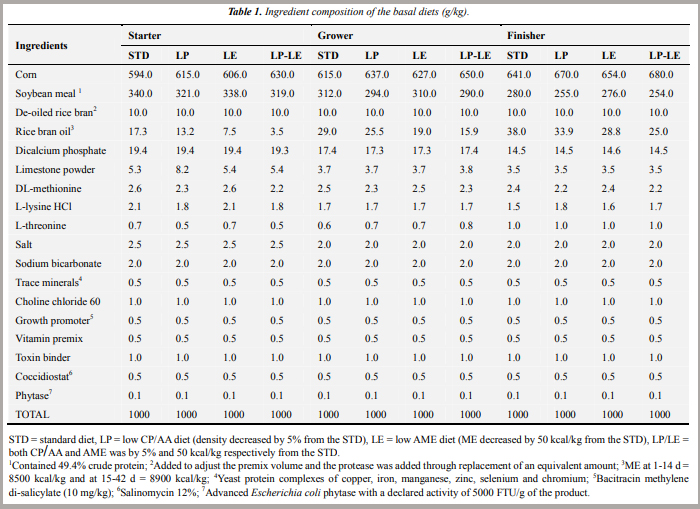
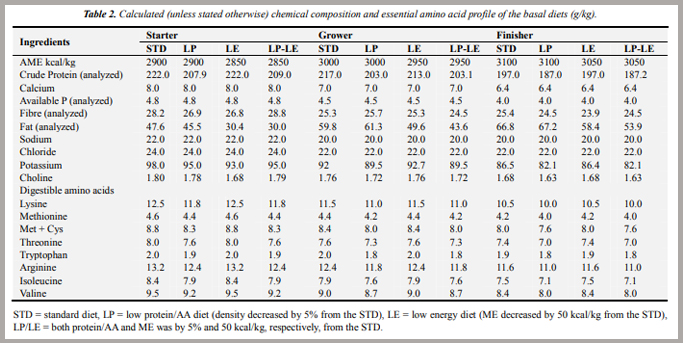
A flock of 720 male Cobb broiler chickens was raised for a period of 42 d with corn-soybean meal-based diets. Four corn-soybean meal-based basal diets were formulated: 1) Standard (STD) diet, with adequate CP/AA and AME; 2) A low protein (LP) diet, where CP/AA was decreased by 5%; 3) A low energy (LE) diet, where dietary AME was decreased by 50 kcal/kg; and 4) A low protein-low energy (LP-LE) diet, where both dietary CP/AA and AME were decreased as mentioned above.
All four basal diets were supplemented with graded level (0, 125, and 200 g/t) of a multi-component alkaline serine protease (Jefo Nutrition Inc., Quebec, Canada).
Sample collection and analysis
Serum: Whole blood samples were collected from one randomly selected bird from each pen (6 birds from each treatment) at 42 d of age. The serum was analysed for glucose, total protein, and uric acid.
Assessing bacterial population: The small intestine and the caeca were manually separated from the rest of the carcass to collect the digesta present in ileum for the enumeration of Salmonella spp., Escherichia coli, and Clostridium perfringens.
Results
The supplementation of protease either at 125 or 200 g/t on Low Protein-Low Energy diets allowed birds to recover the losses in growth performance.Protease supplementation significantly improved ADG (15-28 d and 1-42 d), FCR (at 15-28 d), and European Productivity Index (EPI) in a dose dependent linear pattern independent of the dietary CP/AA and AME levels (Table 3 & 4).
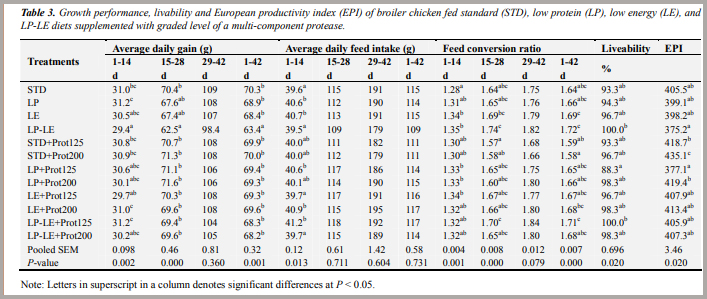
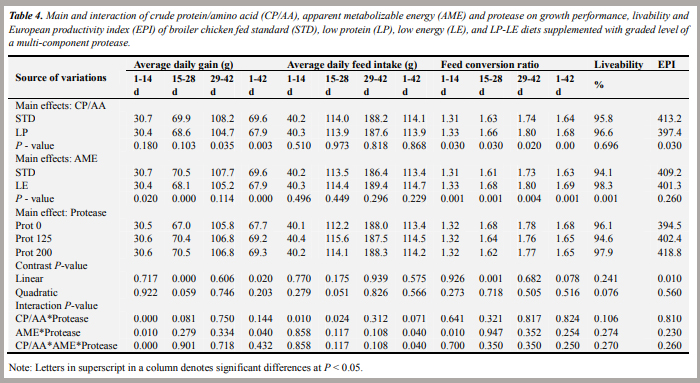
In terms of ileal microbiota population, broilers fed LP-LE diets had significantly higher Escherichia coli, Salmonella spp., and Clostridium perfringens populations as compared to birds fed STD diets. Meanwhile, increasing protease supplementation on STD, LP, LE, and low LP-LE diets, significantly lowers Escherichia coli, Salmonella spp., and Clostridium perfringens populations (Table 5 & 6).
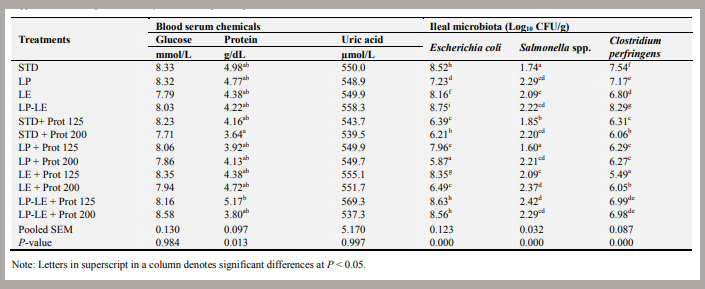
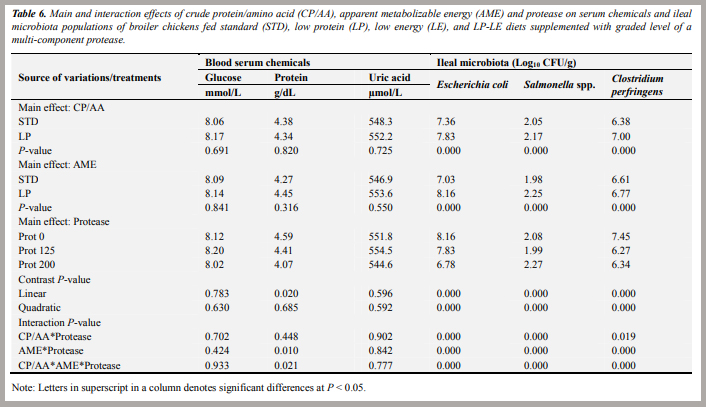
Key findings
1. Interaction effects of AME x Protease and CP x AME x Protease on feed intake were significant for 1-42 d. Liveability (1 to 42-d) varied between the groups (P = 0.02) although the reasons for mortality were non-specific.
2. The protease supplementation linearly improved ADG during 15-28 d (P = 0.001) and 1-42 d (P = 0.022) indicating better responses with higher inclusion level of the protease.
3. Supplementation of protease elicited a dose dependent linear effect on FCR during 15 to 28-d (P = 0.001) and a significant effect of AME x Protease interaction was observed during 1 to 14-d (P = 0.012).
4. Protease supplementation to the low AME diets significantly improved ADG (1-14 and 1-42 d), ADFI (1-42 d) and FCR (1-14 d).
5. Supplementation protease to the LP and the LE diets generally decreased the number of Escherichia coli (P < 0.0001) and Salmonella spp. in the ileal digesta (P< 0.0001).
6. Protease decreased Clostridium perfringens numbers and the effect was more discernible in the LE diets than that in the LP diets (P < 0.0001).
Conclusion
It can be concluded that protease supplementation sustained the harvesting biomass in the experimental birds fed lower nutrient density diets and decreased the numbers of resident bacteria in the hind gut, some of which might be potential pathogens. Hence, the study documented not only the nutrient sparing effects but also the extra-proteinaceous effect in terms of gut health of dietary protease in broiler chickens.






